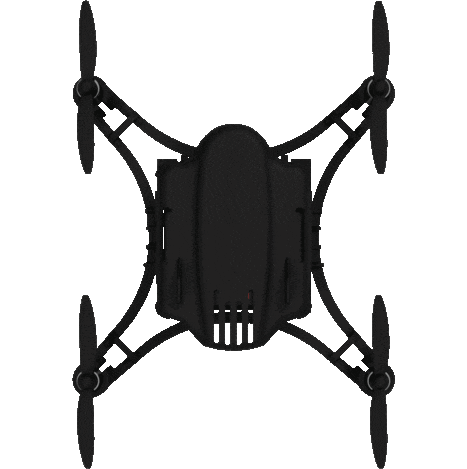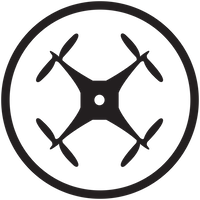Module 5
Propulsion and Vertical motion
Time Duration : 45 minute
🎓Objective:
- To explain what is propulsion and vertical motion of quadcopter.
- Principle of working of jet engine and motor, propeller system.
- To explain about the types of motors and which motors we use and why?
- To make them understand the types of propellers that they’ll be using in making the drone.
📖 Content :
Propulsion is the act of moving or propelling the object in forward direction. If you consider an airplane, the engine is part of the propulsion unit along with the the blades(propellers)
If you consider a jet engine of an airplane, it has blades that spin at high speeds and compress air which are then sprayed with fuel and an electric spark lights the mixture. This burning gas expands and blasts through the nozzle at the back of the engine and thus the airplane is propelled forward with high speeds.
As for the vertical motion, in the case of an aircraft the wings help in that respect.
Now when we come to our quadcopter, we can’t have jet engines attached so we make use of motors and propellers as our propulsion unit to provide propulsion as well as vertical motion.
To give an idea about how a propeller works consider a flat blade. Now if you rotate this in space it’ll just cut through air but it will not produce up thrust or lift.
But if you twist this blade into some angle and then rotate it through air, you’ll see that it creates a pressure difference above and below it.
The above is a lower pressure area as the propeller pushes all the air downwards. Due to this difference of pressure, there is a thrust produced at the high pressure area which helps us move forward.
Part 1- Motors
Need of a motor and the very basic classification of motors ie. AC and DC motors
DC Motor Types
| STEPPER | BRUSHLESS DC | BRUSHED DC |
| Advantages | Advantages | Advantages |
| Accurate position control | High efficiency | Economical and Simplest to use |
| Excellent low speed torque | Little to no maintenance | Speed linear to applied voltage |
| Long Life | High output power per frame size | Simple motor control |
| Disadvantages | Disadvantages | Disadvantages |
| Low efficiency | More complicated motor | High maintenance |
| Prone to resonance noise and cannot accelerate loads | Large initial costs | Short life span |
- Working Principle of Homopolar Motor :
A homopolar motor creates rotational movement (of wire) because of the Lorentz force.
In homopolar motor, the electric current is flowing from positive to the negative terminal of battery through a magnet. Here, the current is actually flowing from the edge of the magnet to its centre and then to the negative terminal of battery.
Now if you notice, The direction of current and the direction of magnetic field are perpendicular to each other. And when the direction of current is perpendicular to the magnetic field, Lorentz force is generated and is perpendicular to both current and magnetic field.
You can use left hand rule : Hold your left hand such that the index finger, thumb and middle finger are mutually perpendicular to each other. Your index finger is pointing in the direction of magnetic field and middle finger is pointing in the direction of current. In this case, your thumb will indicate the direction of Lorentz force and the wire will move/rotate in the same direction as the force.
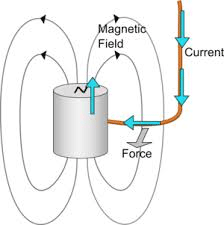
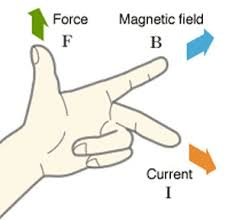
- Pluto’s Motor specifications
No load RPM: 50,000
Maximum Current: 2A
Part B- Propellers
Think of a propeller as a spinning wing. Like a wing, it produces lift, in a upward direction(for pluto)—a force we refer to as thrust.,
Parameters of a standard propeller
- Diameter of a propeller: The end to end distance of the propeller is called the diameter of the propeller.
- Blade angle: Blade angle, usually measured in degrees, is the angle between the chord of the blade and the plane of rotation
- Pitch: Propeller pitch is a linear dimension usually expressed in inches, feet, millimeters, or meters, and is equal to the advance of the propeller in one revolution.
Types of propellers used in Pluto :
- The 2 types will be labelled as A and B. A propellers rotate clockwise and B rotate counter clockwise.
Here’s the diagram for reference
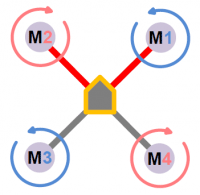
How to attach the propellers on pluto?
Diagonally opposite propellers should have same rotation and neighbouring propellers should have opposite rotation. Why?
When we have a propeller rotating in a certain direction,consider a clockwise rotating propeller (A), it generates a torque on the body in the counterclockwise direction. This causes the entire frame to rotate in the counterclockwise direction,so to balance this we need a propeller that generates a counterclockwise (B) torque to equalize torque on the frame.
Thus a clockwise propeller must have a counterclockwise rotating propeller adjacent to it.
Now in a quadcopter we have placed 2 (A&B) propellers with opposite rotations so we have to do the same with the remaining 2 propellers.
So the propeller with counterclockwise rotation (B) must have a clockwise propeller (A) adjacent to it for the same reason that we need to balance the forces on the quadcopter. And then this clockwise propeller (A) will need another counterpart to keep things in balance thus another counterclockwise propeller (B) in adjacence.
So if we finally see the configuration, we have diagonally opposite propellers to be of same rotation.
👐 Activities :
-
- show the video of working of a DC brushed motor using the following link: https://www.youtube.com/watch?v=LAtPHANEfQo
- Use the Components in the kit (Wire, Magnets , Duracell) to make a homopolar motor and discuss how it works.
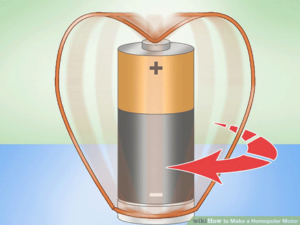
- Start by asking some common examples of propellers and the following questions
- What is a daily life example of propellers?
- Which direction to fans rotate in?
- What happens for the same angles of the blade we rotate the fan in opposite direction of its initial rotation?
- What if we want the fan to rotate in counter clockwise direction and throw air downwards?
- Explain what a propeller really is after this conversation.
- After explaining motor and propeller ask students to put motors in the motor holders with the help of prop tool.
🙋 Frequently Asked Questions
- Can I use my own motors?
Yes but you have to adhere to following constraints
Maximum current: 1 A
Maximum Voltage: 3.7 V
Use only brushed DC Motors
- What will happen if I use big propellers, will the drone fly high?
There are several factors to keep in mind while selecting propellers or any component in general like weight, additional drag it will bring etc.
